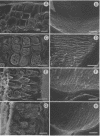Abstract
The development of xylanase activity by isolated barley (Hordeum vulgare cv. Himalaya) aleurone layers exposed to gibberellic acid was enhanced by ethylene, whereas the rate of glucanase synthesis was unaffected by ethylene. The elevated xylanase activity expressed in ethylene-treated tissue may be responsible for enhanced release of amylase in response to ethylene.
The redistribution of ionic species in response to gibberellic acid and ethylene was explored. The release of calcium was much more sensitive to ethylene than the release of any of the other ions investigated (potassium, magnesium, and phosphate). Ethylene induced a 101% increase in the release of calcium from gibberellic acid-treated aleurone layers. The possible relevance of this observation to the ethylene-enhanced release of amylase is discussed.
Full text
PDF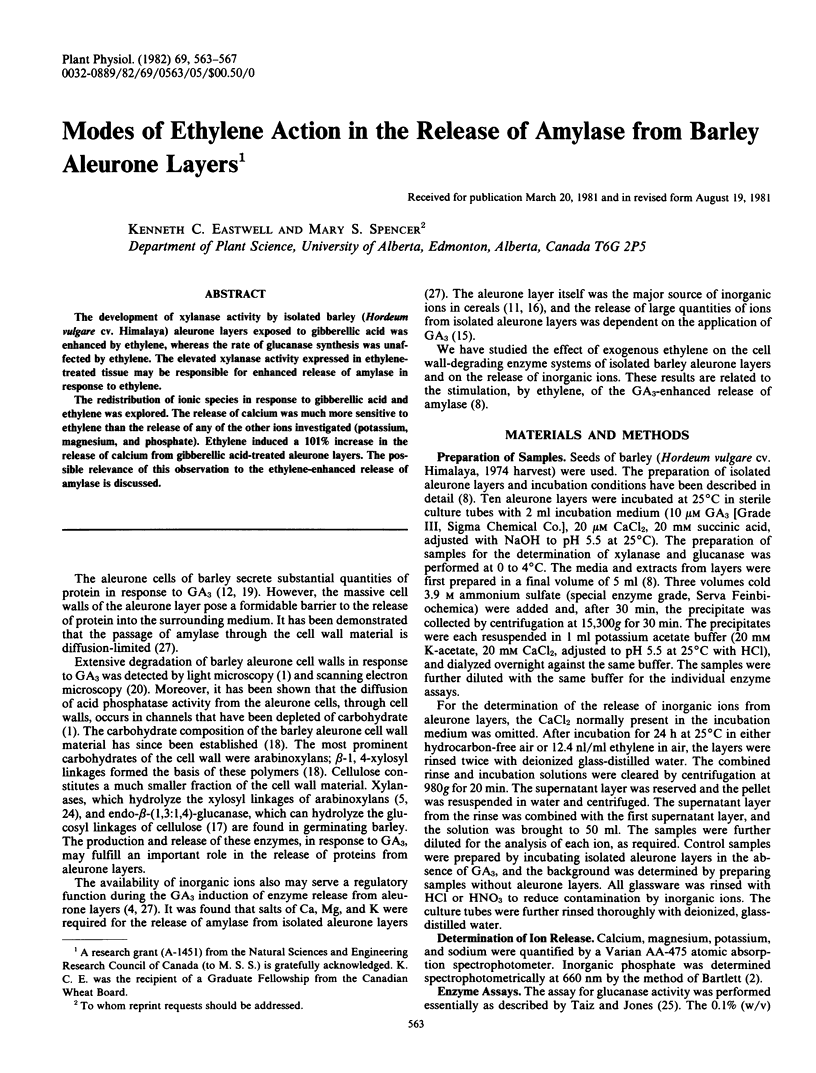
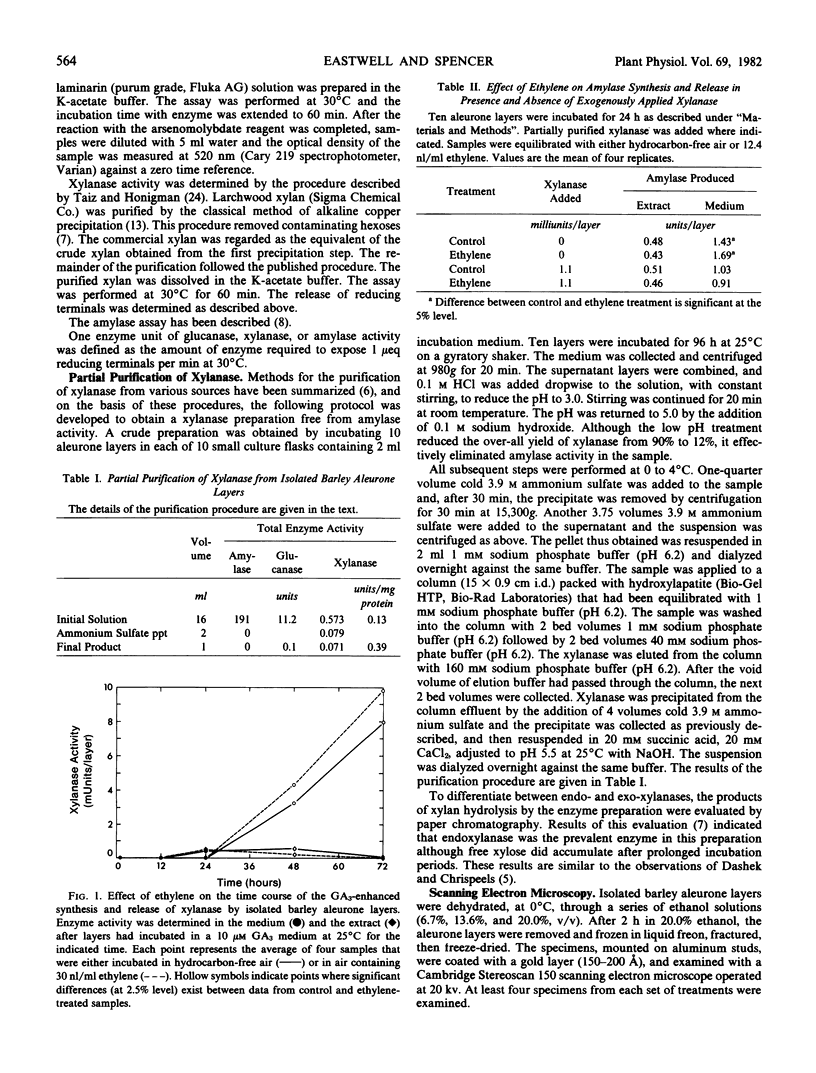
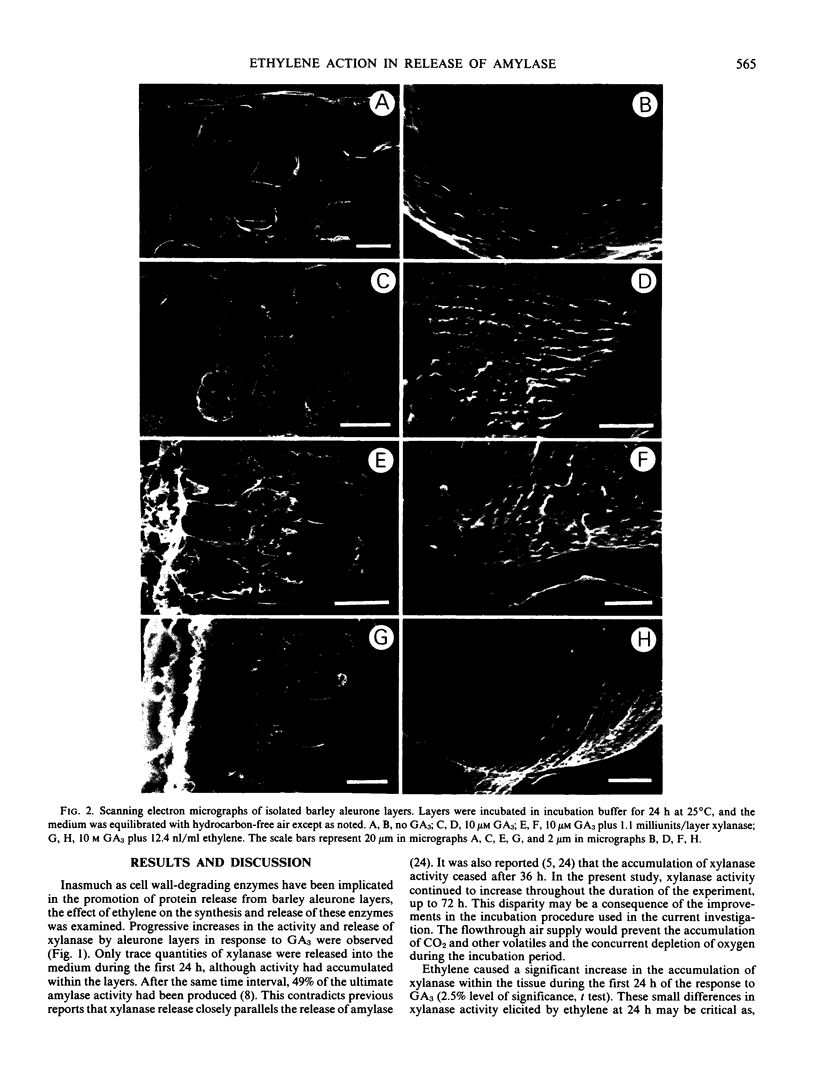
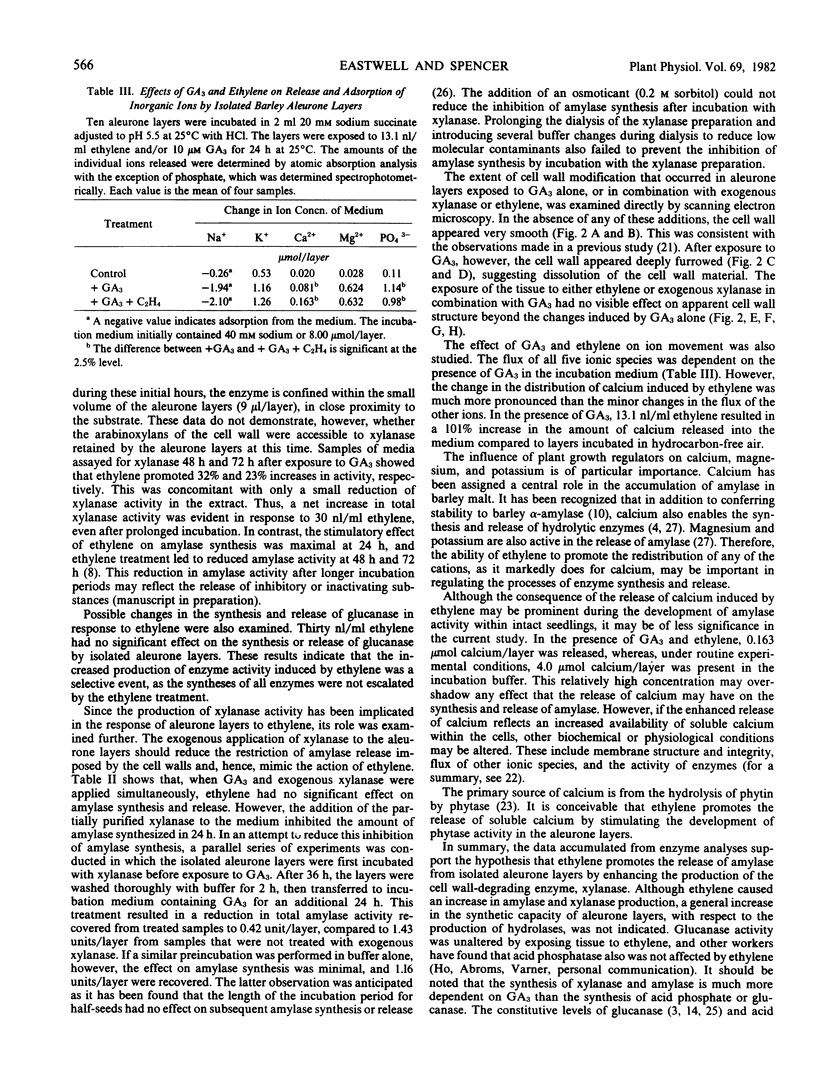

Images in this article
Selected References
These references are in PubMed. This may not be the complete list of references from this article.
- BARTLETT G. R. Phosphorus assay in column chromatography. J Biol Chem. 1959 Mar;234(3):466–468. [PubMed] [Google Scholar]
- Bennett P. A., Chrispeels M. J. De Novo Synthesis of Ribonuclease and beta-1,3-Glucanase by Aleurone Cells of Barley. Plant Physiol. 1972 Mar;49(3):445–447. doi: 10.1104/pp.49.3.445. [DOI] [PMC free article] [PubMed] [Google Scholar]
- Dekker R. F., Richards G. N. Hemicellulases: their occurrence, purification, properties, and mode of action. Adv Carbohydr Chem Biochem. 1976;32:277–352. doi: 10.1016/s0065-2318(08)60339-x. [DOI] [PubMed] [Google Scholar]
- Eastwell K. C., Spencer M. S. Effect of ethylene on the gibberellic Acid-enhanced synthesis and release of amylase by isolated barley aleurone layers. Plant Physiol. 1982 Mar;69(3):557–562. doi: 10.1104/pp.69.3.557. [DOI] [PMC free article] [PubMed] [Google Scholar]
- Jones R. L. Gibberellic Acid and Ion Release from Barley Aleurone Tissue: Evidence for Hormone-dependent Ion Transport Capacity. Plant Physiol. 1973 Oct;52(4):303–308. doi: 10.1104/pp.52.4.303. [DOI] [PMC free article] [PubMed] [Google Scholar]
- Jones R. L. Gibberellic Acid-enhanced Release of beta-1,3-Glucanase from Barley Aleurone Cells. Plant Physiol. 1971 Mar;47(3):412–416. doi: 10.1104/pp.47.3.412. [DOI] [PMC free article] [PubMed] [Google Scholar]
- McNeil M., Albersheim P. The Structure of Plant Cell Walls: VII. Barley Aleurone Cells. Plant Physiol. 1975 Jan;55(1):64–68. doi: 10.1104/pp.55.1.64. [DOI] [PMC free article] [PubMed] [Google Scholar]
- Taiz L., Honigman W. A. Production of cell wall hydrolyzing enzymes by barley aleurone layers in response to gibberellic Acid. Plant Physiol. 1976 Sep;58(3):380–386. doi: 10.1104/pp.58.3.380. [DOI] [PMC free article] [PubMed] [Google Scholar]
- Varner J. E. Gibberellic Acid Controlled Synthesis of alpha-Amylase in Barley Endosperm. Plant Physiol. 1964 May;39(3):413–415. doi: 10.1104/pp.39.3.413. [DOI] [PMC free article] [PubMed] [Google Scholar]
- Varner J. E., Mense R. M. Characteristics of the process of enzyme release from secretory plant cells. Plant Physiol. 1972 Feb;49(2):187–189. doi: 10.1104/pp.49.2.187. [DOI] [PMC free article] [PubMed] [Google Scholar]



